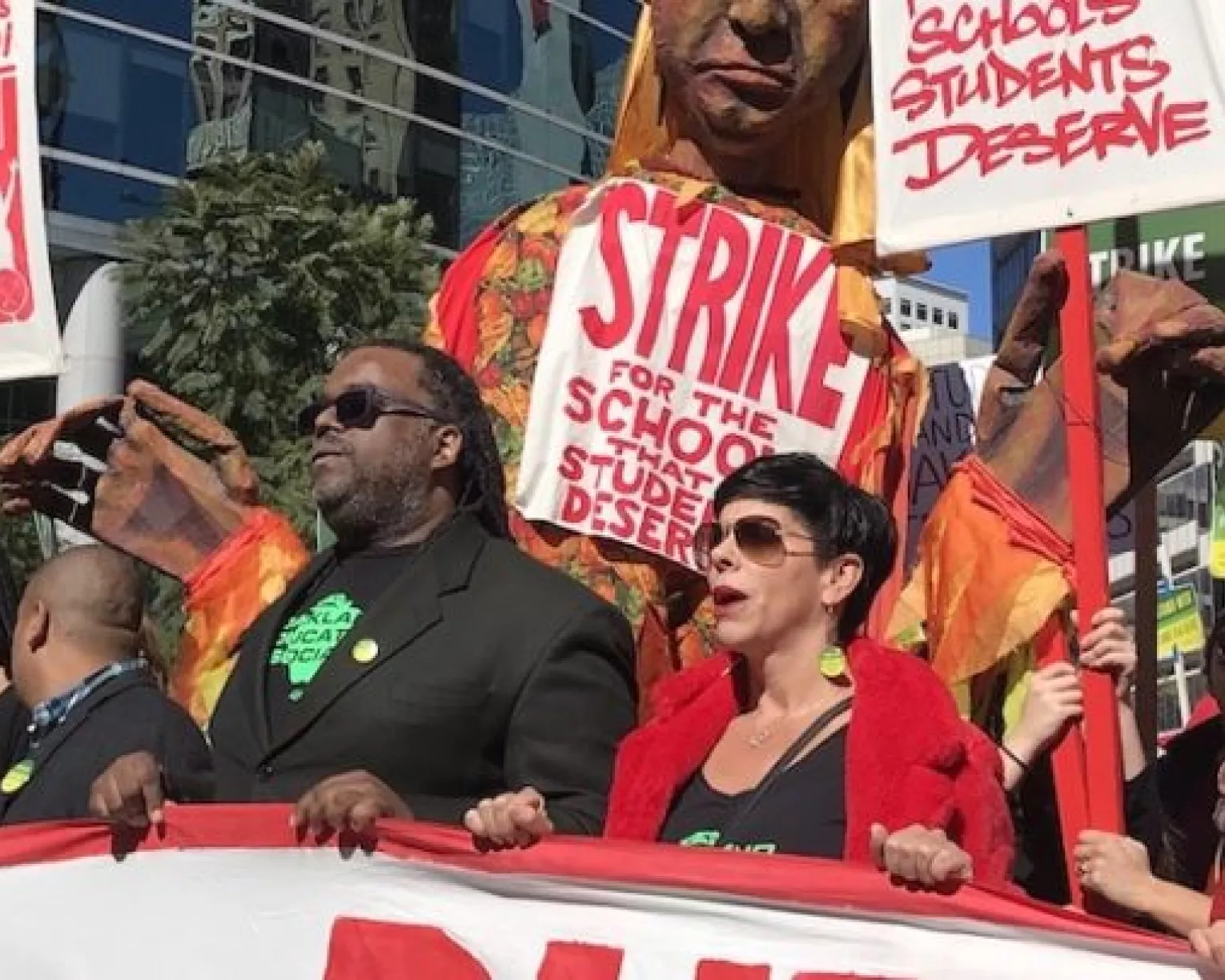NEA provides guidance and resources for returning to classrooms safely, and with an emphasis on racial and social justice.
Learn More
Published: May 6, 2020
The COVID-19 pandemic will change all our lives in ways we are unable to imagine. But we cannot sit and wring our hands. We must plan, prepare, and mobilize to advocate for what we know students and educators need— especially by focusing on the deep negative impacts for students based on race and those experiencing deep poverty or living in rural, isolated communities.
These legislative proposals will directly help our public schools, students, and educators navigate these turbulent times. (Jump to our Take Action page to act now!)
NEA members are coming together with families, community leaders and other activists to demand that Congress act to ensure that students and communities Rise Together by:
- Stabilizing education funding for students in our communities’ schools and campuses. ($175B)
- Building bridges for educational opportunity for students and stronger communities.
- Supporting the safety, health and well-being of students and educators.
STABILIZING EDUCATION FUNDING FOR STUDENTS IN OUR COMMUNITIES, SCHOOLS, AND CAMPUSES ($175B)
- State and local budgets are expected to see the deepest cuts in history as a result of the COVID-19 pandemic, placing students, educators, and public schools at great risk. We must make sure Congress invests in the cornerstone our democracy—public education.
- We’re calling on Congress to provide at least $175 billion to distribute to states and local districts, allocated by formula based on poverty, to fill COVID-19 budget gaps that will hurt students and educators in schools and on campuses.
- Members of Congress must reject Education Secretary Betsy DeVos’ “microgrants” and other voucher schemes intended to starve public education and siphon funding from students who depend on their local public schools.
BUILDING BRIDGES FOR EDUATIONAL OPPORTUNITIES FOR STUDENTS AND STRONGER COMMUNITIES
- COVID-19 has brought the stark realities of a digital divide that impacts 10 million K-12 students. The most negatively impacted are those living in poverty and in rural areas and we see deep disparities based on race regardless of socio-economic status or community type. We know these students are at risk of falling behind their peers because they don’t have internet access at home nor adequate hardware in many cases and are in effect denied the opportunities to learn that are afforded their peers.
- We demand that Congress provide funding for the highly successful E-rate program which helps schools ensure Wi-Fi hotspots and connected devices for K-12 students who do not have internet access and connected devices at home.
- Congress must appropriate funds to develop programs to help reach and support students who have historically been denied a well-rounded education in fully staffed public schools due to funding shortfalls in marginalized communities. The impact of COVID-19 has exacerbated long-standing inequities in our public schools and communities.
- The 20/21 school year will be like no other in history. Congress must provide funds to help educators connect 19/20 instruction and learning opportunities to 20/21 instruction and learning opportunities, using modified school calendars and other extended learning components that are developed collaboratively and in partnership with educators, students, parents and communities. Decision making should have the clear voice of educators at its heart.
SUPPORTING THE SAFETY, HEALTH, AND WELL-BEING OF STUDENTS AND EDUCATORS
- Education Support Professionals (ESPs) and other school staff who interact with students and their families must have the proper personal protective equipment (PPE) and training to protect students, colleagues, families, and themselves.
- The safety and well-being of students and educators when they return to school cannot be compromised. The needs will be varied, including mental health and nutritional supports, training for loss and trauma related to the COVID-19 crisis.
- Expand funding to community-based health care (inclusive of mental health services) with incentives to partner with schools to expand care – (targeted to communities with high rates of student households living in poverty)
- Our concern is for the safety of students and all who work with them in schools and classrooms. We must make sure that people who work in our schools have the proper training and guidance on mitigating and preventing the spread of the coronavirus.
- We demand that Congress task the Occupational Safety and Health Administration (OSHA) with developing emergency standards to help protect frontline workers at risk of contracting coronavirus.
- We demand that monthly federal student loan payments and interest accrual, including commercially held Federal Family Education Loans (FFEL) and Perkins Loans, be canceled for the duration of the COVID-19 national emergency.
- Investment in housing supports for households with school-aged children
NEA provides guidance and resources for returning to classrooms safely, and with an emphasis on racial and social justice.
Learn More
Are you an affiliate?
Jump to updates, opportunities, and resources for NEA state and local affiliates.

Join a campaign.
We need to dismantle unjust systems. We need to fully fund public schools. We need to hold our elected leaders accountable to our communities. And we need your help to make it happen.
Stay Informed We'll come to you
We're here to help you succeed in your career, advocate for public school students, and stay up to date on the latest education news. Sign up to stay informed



